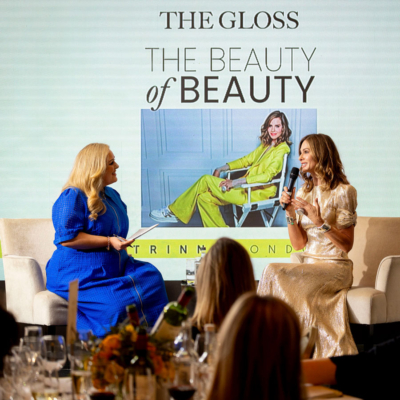There’s nothing inevitable about suffering symptoms to the vaginal area post-menopause. Localised hormone treatment is an effective solution for many women. Menopause expert Dr Rita Galimberti explains …
Although menopause is now talked about more openly than in the past, many Irish women still lack the information they need to make informed decisions about the symptoms likely to affect them as they go through this stage of their life.
Vaginal atrophy – also known as genito-urinary syndrome of menopause, as it affects both vagina and bladder – is a condition that affects the vast majority of post-menopausal women, yet most have never heard of it. Vaginal atrophy is the thinning, drying and inflammation of the vaginal walls that occurs in all women when oestrogen levels drop and unless treated, will progressively worsen over time.
Vaginal atrophy can cause constant burning and irritation as well as making intercourse painful, and can also lead to distressing urinary symptoms. The good news is that the condition is very treatable.
“In the majority of cases,” explains Dr Rita Galimberti, Specialist Gynaecologist, “vaginal atrophy occurs a few years after menopause, in women who do not take HRT. They tend to come forward in their mid-fifties when symptoms have become uncomfortable.”

Dr Rita Galimberti and Dr Suzanne O’Sullivan.
“It can be very distressing for women, as many do not know about the condition and it takes them a while to realise what is going on, and another while to come and look for help. Often the first thing they notice is they might have a dry sensation and be experiencing painful sex, or dyspareunia. Lubricants can be helpful for some women but for others it can be sore to attempt any type of sexual activity. In some, vaginal atrophy presents as recurring infections – thrush and UTIs – common symptoms of the menopause, “ says Dr Rita.
“Vaginal changes are physiological, and will happen to all women. But not all women realise what is going on. Currently very few come forward for treatment because they think it is an inevitable thing about which they can do nothing, and they just have to put up with it. Unfortunately some women are told that it is part of ageing and they need to get on with it; they are not offered solutions and so women tend not to go back a second time for more advice. I find that quite sad, because it is actually a very treatable condition.”
Dr Rita explains that while lubricant can help with the issue of painful sex, by protecting the delicate skin of the vagina, it doesn’t fix the underlying problem.

“Vaginal oestrogen is the main solution,” she says, “and it’s a good option for most women as it does not carry the same risk as HRT. That’s because it involves a tiny dose applied directly into the vagina and it acts locally only in this area. It does require commitment however, as you have to insert a tablet or cream into the vagina, sometimes every day, sometimes twice a week, and not everyone is prepared to do that. It can take a long time to start seeing an improvement, and once you start you have to continue using it to maintain that improvement, otherwise you go back to square one. If you are sexually active it makes sense to continue and women should feel that it is safe to use in the medium to long term under medical supervision.”
Another more recent development is laser treatment to improve blood supply and promote collagen rejuvenation, which makes for a significant improvement in symptoms. Dr Rita says this is a “gamechanger” especially for women who have had breast cancer or find using vaginal oestrogen difficult.
“Laser treatment reverses vaginal atrophy changes faster than oestrogen, by gentle heating of the mucosa of the vagina. Once the tissues have revived, the woman can then also use oestrogen to maintain that improvement if she wishes. This is a particularly good option for women who have had symptoms for a long time and whose quality of life or sexual relationships are impacted. For best results we recommend three treatments about a month apart, using Renovalase, an Erbium:YAG by Fotona, as it is proven to be very safe, well tolerated and effective. Not all laser treatments are the same, though, and it’s important that when women do their research they look at newer and safer non-ablative technology such as Renovalase. This treatment should be performed by a specialist gynaecologist as we offer at Femalase, where we can ensure that all treatment options are discussed and that nothing is missed.”
Femalase was set up by Dr Suzanne O‘ Sullivan, Consultant Urogynaecologist in Cork and by Dr Rita Galimberti, and is a dedicated women’s health laser service offering specialist assessment and treatment for vaginal atrophy and urinary incontinence.
For information on Femalase and Renovalase visit www.femalase.com.
For a variety of reasons, not every woman is in a position to visit a menopause specialist, and so Dr Rita has recorded a series of podcasts which can be heard at www.menopause.ie/#podcasts.
The podcasts cover the menopause in general, HRT, long term implications of the menopause, vaginal problems in menopause, and urinary problems.
Other information ca be found at: www.thebms.org.uk.
LOVETHEGLOSS.IE?
Sign up to our MAILING LIST now for a roundup of the latest fashion, beauty, interiors and entertaining news from THE GLOSS MAGAZINE’s daily dispatches.









